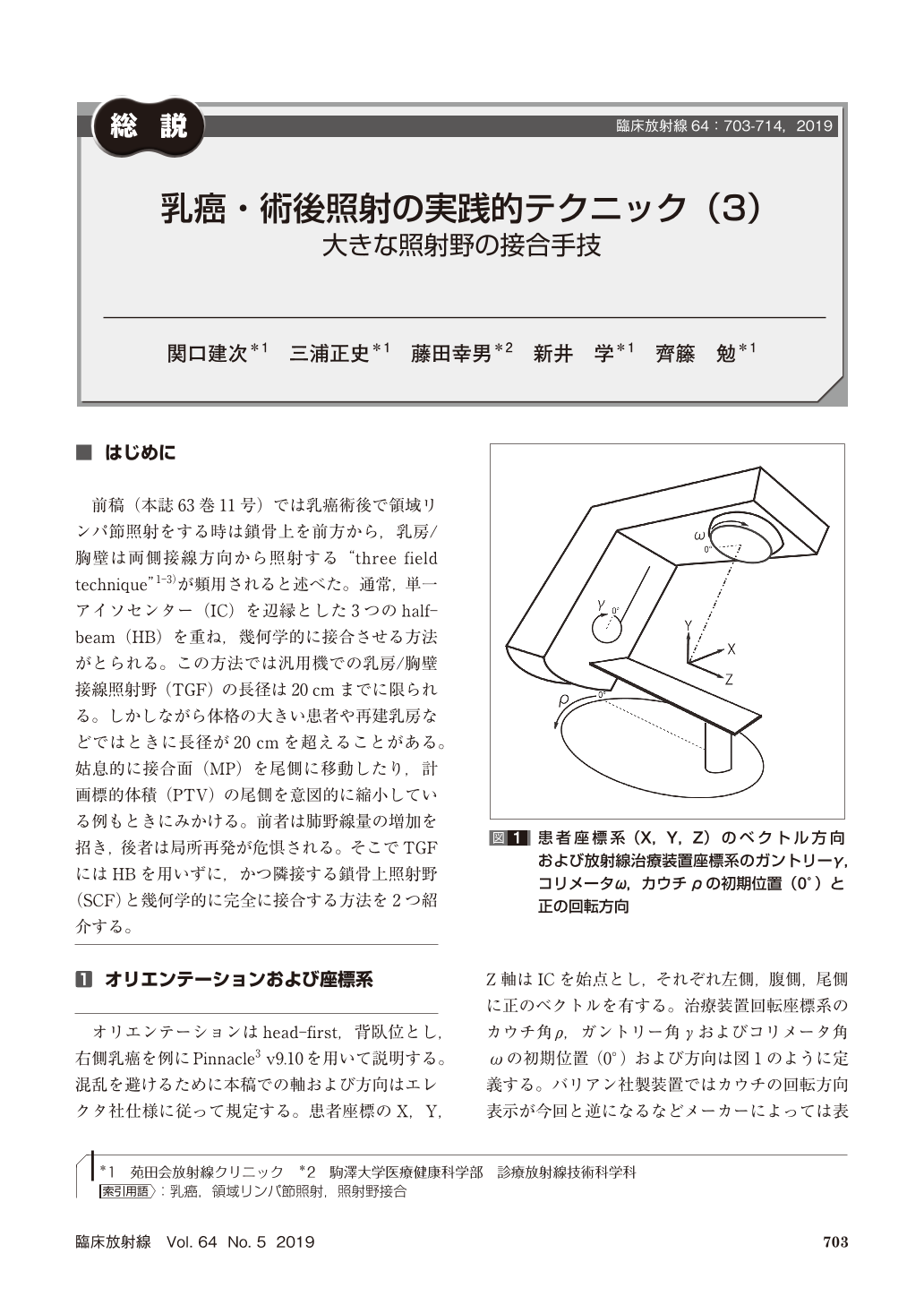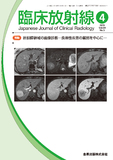Japanese
English
- 有料閲覧
- Abstract 文献概要
- 1ページ目 Look Inside
- 参考文献 Reference
前稿(本誌63巻11号)では乳癌術後で領域リンパ節照射をする時は鎖骨上を前方から,乳房/胸壁は両側接線方向から照射する “three field technique”1-3)が頻用されると述べた。通常,単一アイソセンター(IC)を辺縁とした3つのhalf-beam(HB)を重ね,幾何学的に接合させる方法がとられる。この方法では汎用機での乳房/胸壁接線照射野(TGF)の長径は20cmまでに限られる。しかしながら体格の大きい患者や再建乳房などではときに長径が20cmを超えることがある。姑息的に接合面(MP)を尾側に移動したり,計画標的体積(PTV)の尾側を意図的に縮小している例もときにみかける。前者は肺野線量の増加を招き,後者は局所再発が危惧される。そこでTGFにはHBを用いずに,かつ隣接する鎖骨上照射野(SCF)と幾何学的に完全に接合する方法を2つ紹介する。
As reported in our previous article, “three field technique” is usually applied in case of comprehensive irradiation of the breast/chest wall and regional draining lymph nodes after breast cancer surgery. Sometimes, however, patient anatomy may make it unable to use half-beam mono-isocentric technique. This is because the maximal size of half-beam is restricted to 20 cm. This article introduces two types of practical and perfect field matching techniques, which simply solve a geometrical problem without using a half-beam. The mono-isocentric technique, when carefully applied, may be the optimal choice.

Copyright © 2019, KANEHARA SHUPPAN Co.LTD. All rights reserved.


